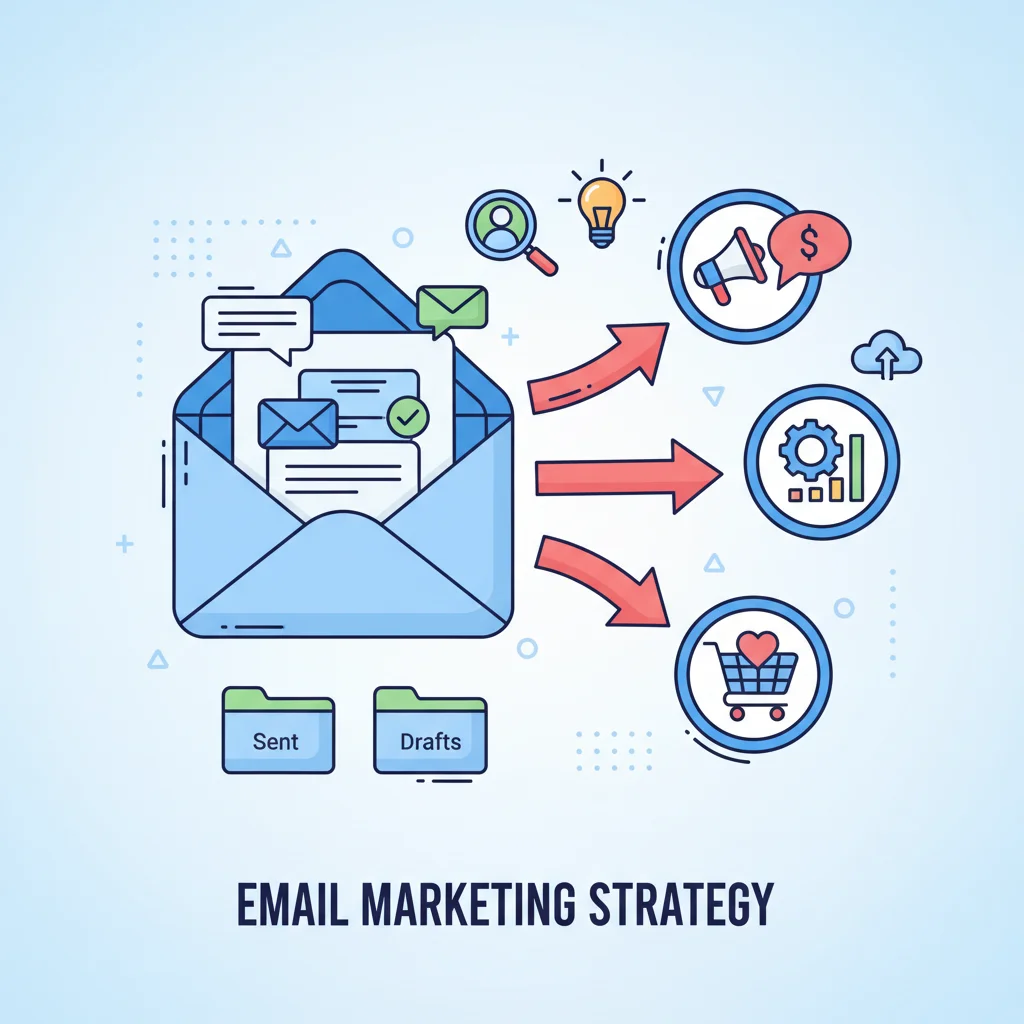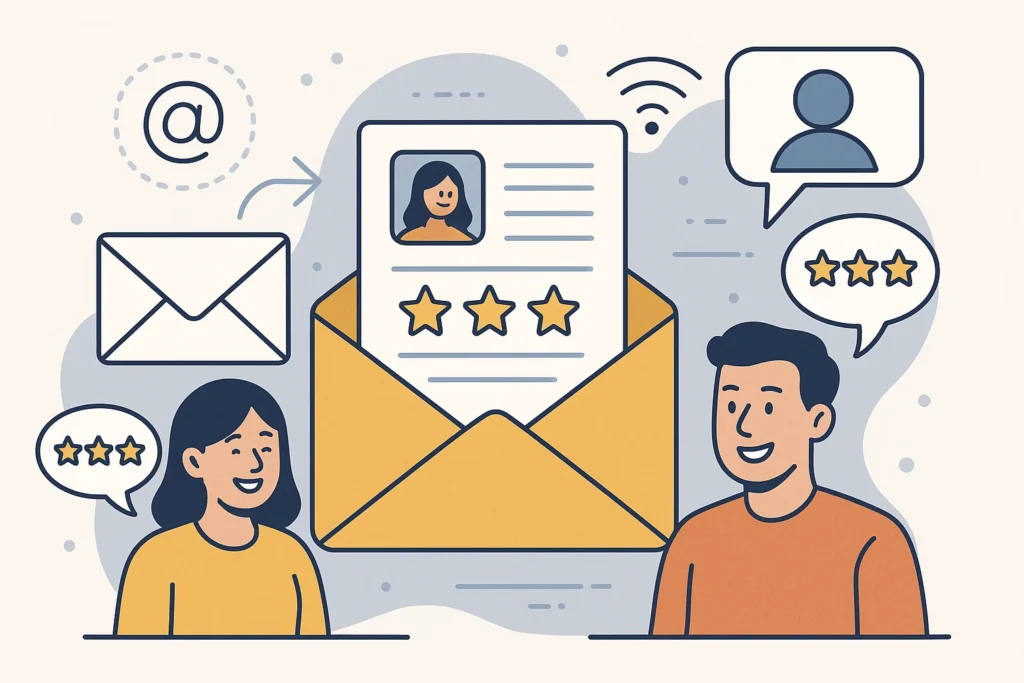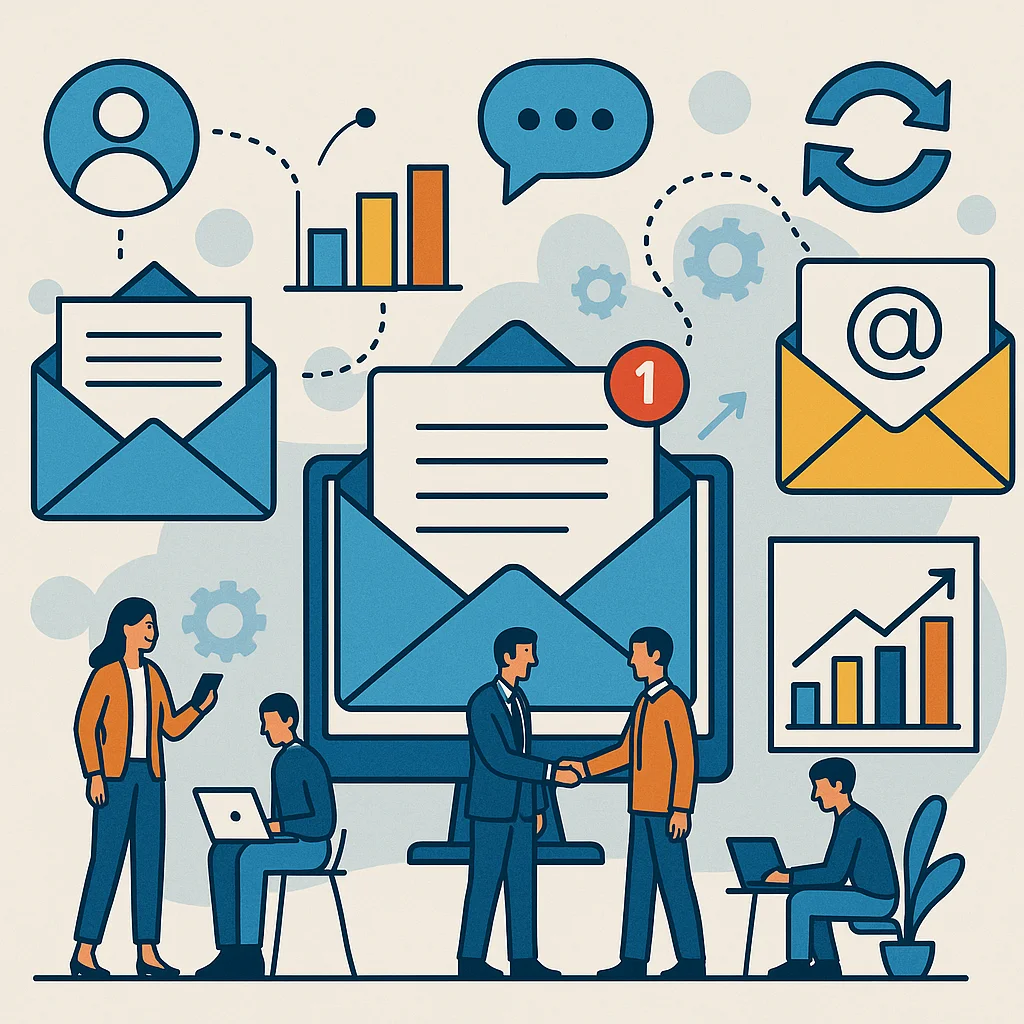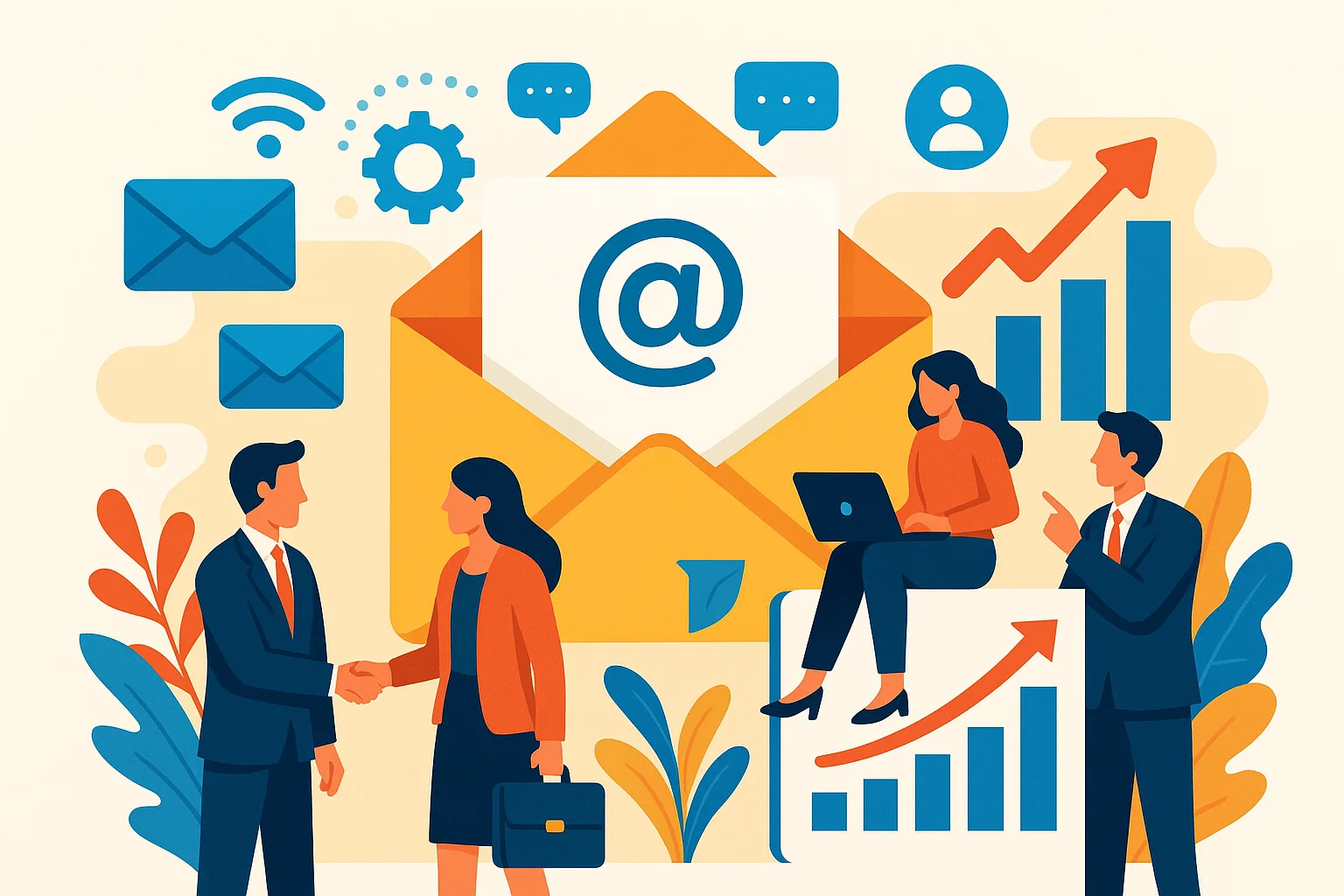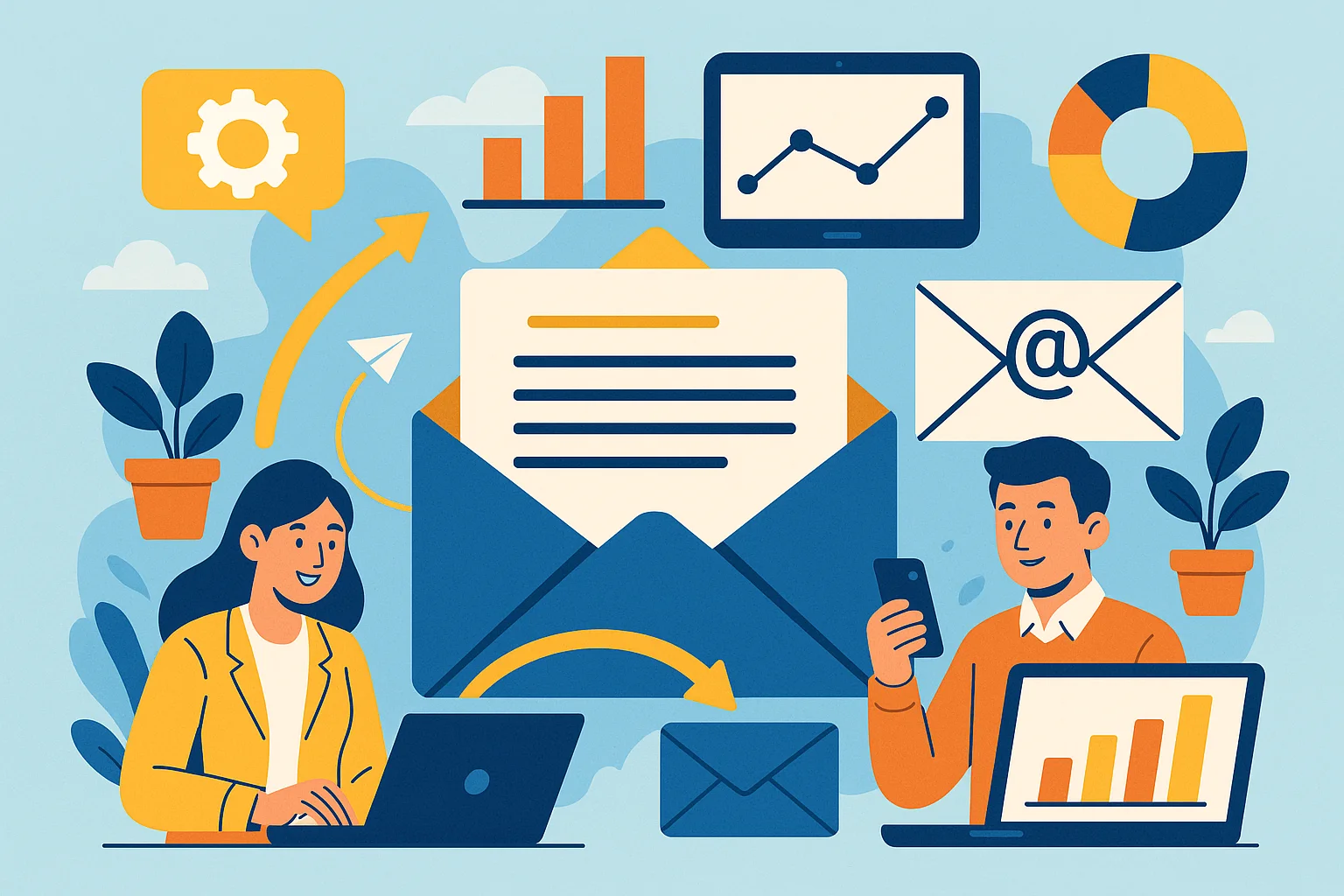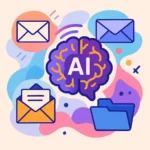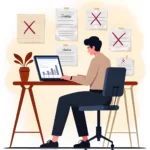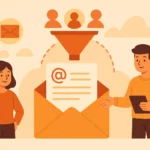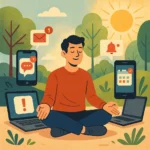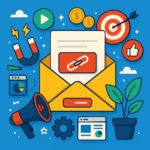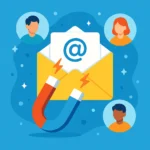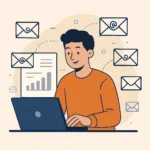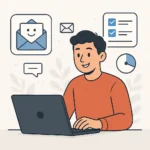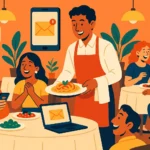Now Reading: 12 Best Email Marketing Strategies for B2C That Actually Convert
-
01
12 Best Email Marketing Strategies for B2C That Actually Convert
12 Best Email Marketing Strategies for B2C That Actually Convert

Your B2C email campaigns are probably sitting in spam folders right now. While you’re crafting what you think are brilliant newsletters, your customers are hitting delete faster than you can say “unsubscribe.” Here’s the brutal truth: most B2C brands are doing email marketing completely wrong. But don’t worry – I’m about to share the best email marketing strategies for B2C that’ll turn your inbox into a revenue-generating machine.
Key Takeaways
Here are the 12 best email marketing strategies for B2C companies that drive real results:
- Personalization beyond first names – Use behavioral data and purchase history
- Strategic email segmentation – Group customers by interests and behaviors
- Welcome email series – Make powerful first impressions with new subscribers
- Abandoned cart recovery – Win back potential customers who didn’t complete purchases
- Birthday and milestone emails – Celebrate customers with special offers
- Product recommendation engines – Suggest relevant items based on past purchases
- Mobile-first email design – Optimize for the 85% of users reading on phones
- Compelling subject lines – Use urgency, curiosity, and personalization to boost opens
- Automated email workflows – Set up campaigns that run on autopilot
- Win-back campaigns – Re-engage dormant subscribers before they’re gone forever
- Social proof integration – Include reviews and testimonials in your emails
- Interactive email content – Use AMP technology for engaging experiences
Personalization Beyond First Names
Let’s get real about personalization. Slapping someone’s first name in the subject line isn’t personalization anymore – it’s email marketing from 2010. Today’s best email marketing strategies for B2C go way deeper than that surface-level stuff.
True personalization uses behavioral data to create emails that feel like they were written specifically for each customer. When someone browses your skincare section but doesn’t buy anything, your next email shouldn’t be about winter coats. It should feature skincare tips, product recommendations, or a gentle nudge about those products they were eyeing.
Smart B2C brands are using dynamic content that automatically changes based on who’s reading the email. The same email template might show running shoes to fitness enthusiasts and dress shoes to business professionals. This isn’t magic – it’s just good data usage.
Here’s what works: track what pages people visit, what products they view, how much they typically spend, and when they usually shop. Then use that information to create emails that actually matter to them. A customer who always shops during sales shouldn’t get full-price promotions. Someone who buys premium products doesn’t want to see your budget options.
The result? Personalized emails generate 6x higher transaction rates than generic blasts. Your customers feel understood, and you make more money. Win-win.
Strategic Email Segmentation
Sending the same email to your entire list is like using a megaphone when you need a conversation. Email segmentation is how you turn that megaphone into targeted, personal messages that actually get results.
Think about it: a 22-year-old college student and a 45-year-old executive have completely different needs, budgets, and shopping behaviors. Why would you send them identical emails?
Effective B2C segmentation goes beyond basic demographics. Sure, age and location matter, but behavioral segments are where the magic happens. Create segments based on:
- Purchase frequency – VIP customers vs. occasional buyers
- Spending habits – budget-conscious vs. premium shoppers
- Product preferences – which categories they love most
- Engagement levels – email openers vs. clickers vs. lurkers
- Lifecycle stage – new subscribers vs. loyal customers
The beauty of segmentation is that it makes everything else easier. Your subject lines can be more specific, your offers more relevant, and your content more engaging. Instead of trying to appeal to everyone (and appealing to no one), you’re speaking directly to specific groups of people.
Segmented campaigns get 14.31% higher open rates than non-segmented ones. That’s not a small improvement – that’s the difference between email marketing that works and email marketing that wastes your time.
Useful Articles:
Welcome Email Series
Your welcome email is like a first date – mess it up, and you might not get a second chance. But nail it, and you’ve started a beautiful relationship that could last for years.
Welcome emails have an 82% open rate, which makes them the most opened emails you’ll ever send. That’s your golden opportunity to make an incredible first impression, but most B2C brands blow it with boring, generic messages.
A killer welcome series doesn’t just say “thanks for subscribing.” It tells a story, sets expectations, and gives people a reason to stick around. Here’s what your welcome series should include:
Email 1: The warm greeting – Thank them, introduce your brand’s personality, and deliver any promised incentives immediately. Don’t make people hunt for their discount code.
Email 2: The brand story – Share why you started your company, what makes you different, and what customers can expect. People buy from brands they connect with emotionally.
Email 3: The social proof – Show off customer reviews, testimonials, or user-generated content. New subscribers want to know they made a good choice.
Email 4: The helpful content – Provide value beyond selling. Share tips, guides, or resources related to your products. This builds trust and positions you as an expert.
Space these emails 2-3 days apart, and watch your new subscribers turn into engaged customers. Welcome series generate 320% more revenue than single welcome emails.
Abandoned Cart Recovery
Picture this: someone spends 20 minutes browsing your website, adds three items to their cart, starts the checkout process, then… disappears. Frustrating, right? But here’s the thing – 69% of online shopping carts get abandoned, which means this scenario happens constantly.
Abandoned cart emails are your second chance to close the deal. They’re like that friend who reminds you about the concert tickets you forgot to buy – helpful, timely, and often very welcome.
The best abandoned cart campaigns don’t just remind people about their forgotten items. They remove barriers, add incentives, and create urgency. Here’s a winning sequence:
Email 1 (sent 1 hour later): A gentle reminder with product images and a direct link back to their cart. Keep it simple and friendly.
Email 2 (sent 24 hours later): Address common concerns like shipping costs, return policies, or security. Include customer reviews for the abandoned products.
Email 3 (sent 72 hours later): Offer a small discount or free shipping to sweeten the deal. Create urgency by mentioning limited stock or time-sensitive offers.
Don’t go overboard with discounts though. You don’t want to train customers to abandon carts just to get better deals. Abandoned cart emails recover about 15% of lost sales – that’s money you would’ve lost forever without this strategy.
Birthday And Milestone Emails
Everyone loves feeling special on their birthday, and birthday emails are one of the easiest ways to make your customers smile while boosting your sales.
These emails work because they’re inherently personal and timely. You’re not trying to sell something – you’re celebrating your customer. That emotional connection translates into serious business results. Birthday emails generate 342% higher revenue than promotional emails.
But don’t limit yourself to just birthdays. Milestone emails can celebrate:
- Anniversary of first purchase – “It’s been a year since you joined our family!”
- Loyalty program achievements – “Congratulations on reaching VIP status!”
- Seasonal milestones – “Happy first day of spring from all of us!”
- Personal achievements – Based on information customers share
The magic ingredient in milestone emails is the gift. It doesn’t have to be huge – a 15% discount, free shipping, or a small freebie works perfectly. The gesture matters more than the value.
Make these emails feel celebratory with bright colors, fun imagery, and enthusiastic copy. Use exclamation points! Add some emoji! This isn’t the time for corporate formality – it’s time to party.
Pro tip: Collect birthday information during signup or through preference centers. You can’t celebrate what you don’t know about.
Useful Articles:
Product Recommendation Engines
Product recommendations are like having a personal shopping assistant for every customer. They analyze what people like, what they’ve bought, and what similar customers enjoy, then serve up suggestions that feel almost psychic.
Amazon didn’t become a trillion-dollar company by accident. Their recommendation engine drives 35% of their total revenue. While you might not have Amazon’s resources, you can definitely steal their strategy.
Effective product recommendations work in several scenarios:
Post-purchase emails: “People who bought X also loved Y.” Strike while the buying mood is hot.
Browse abandonment: “Still thinking about those shoes?” Show the exact products they viewed plus similar options.
Replenishment reminders: For consumable products, remind customers when they’re probably running low.
Seasonal suggestions: Recommend winter coats to people who bought boots last year.
The key is making recommendations feel helpful, not pushy. Frame them as suggestions from a friend, not sales pitches from a robot. Use language like “you might also like” or “customers like you also bought” instead of “buy this now.”
Personalized product recommendations can increase email revenue by up to 20%. That’s significant money just for showing people products they’re actually interested in.
Mobile-First Email Design
Here’s a reality check: 85% of people read emails on their phones. If your emails look terrible on mobile devices, you’re basically throwing money away.
Mobile-first design isn’t just about making things smaller. It’s about rethinking how people interact with emails on tiny screens while they’re walking, commuting, or lying in bed.
Your mobile emails need:
Single-column layouts that don’t require horizontal scrolling. Multi-column designs might look fancy on desktop, but they’re nightmares on phones.
Large, tappable buttons that work with thumbs, not mouse cursors. Make your call-to-action buttons at least 44 pixels tall and give them plenty of space.
Scannable content with short paragraphs, bullet points, and clear headings. Mobile readers skim more than they read.
Fast-loading images that don’t eat up data plans. Optimize your images and always include alt text for when images don’t load.
Readable font sizes of at least 14 pixels. If people need to zoom in to read your email, you’ve already lost them.
Test your emails on actual phones, not just desktop preview tools. What looks good on your computer screen might be unreadable on a phone. Mobile-optimized emails get 15% higher click-through rates than non-optimized ones.
Compelling Subject Lines
Your subject line is like a movie trailer – it needs to give people just enough information to make them want to see more, without spoiling the whole story.
Great B2C subject lines tap into basic human psychology. They create curiosity, urgency, or desire in just a few words. Here’s what works:
Urgency and scarcity: “Only 3 hours left” or “Last chance for 50% off.” These work because our brains are wired to avoid missing out.
Personalization: “Sarah, your cart is waiting” or “Recommended just for you.” Using names increases open rates, but behavioral personalization works even better.
Curiosity gaps: “The mistake 90% of people make” or “Why we’re giving away free products.” These make people click to fill the knowledge gap.
Benefit-focused: “Save 2 hours every morning” or “Look 10 years younger.” Lead with what customers get, not what you’re selling.
Questions: “Ready to transform your skin?” or “Tired of boring workouts?” Questions engage the brain and demand answers.
Keep subject lines under 50 characters so they don’t get cut off on mobile devices. Subject lines with urgency words get 22% higher open rates than generic ones.
Avoid spam trigger words like “free,” “guaranteed,” or “act now.” These might get your emails filtered out before anyone sees them.
Useful Articles:
Automated Email Workflows
Email automation is like having a marketing team that never sleeps, never takes breaks, and never forgets to follow up with customers. Once you set up these workflows, they run themselves and make you money 24/7.
The best B2C brands use automation for:
Onboarding sequences that guide new customers through their first purchase and beyond. Don’t just welcome people – help them succeed with your products.
Re-engagement campaigns that wake up dormant subscribers before they forget about you completely. These can save relationships that would otherwise be lost.
Cross-sell and upsell flows that suggest complementary products based on purchase history. If someone buys a camera, they might need a memory card or carrying case.
Seasonal campaigns that automatically promote relevant products as holidays and seasons approach. Set these up once and let them run year after year.
Customer lifecycle emails that adapt to where people are in their journey with your brand. New customers get different messages than VIP loyalists.
The beauty of automation is that it scales infinitely. Whether you have 100 subscribers or 100,000, these workflows deliver personalized experiences without any extra effort from you. Automated emails generate 320% more revenue than non-automated campaigns.
Win-Back Campaigns
Not every customer relationship lasts forever, but that doesn’t mean you should give up without a fight. Win-back campaigns are your last chance to re-engage customers who’ve gone quiet.
These campaigns target subscribers who haven’t opened emails or made purchases in a specific timeframe – usually 3-6 months depending on your business. The goal is simple: remind them why they loved you in the first place.
Effective win-back emails often include:
Special offers that are hard to refuse. This might be your biggest discount of the year or an exclusive deal just for returning customers.
Product updates showing what’s new since they last engaged. Maybe you’ve launched products they’d love or improved services they complained about.
Emotional appeals that reconnect with your brand story. Remind them of the problem you solve or the values you share.
Feedback requests asking why they stopped engaging. Sometimes people just need to feel heard.
Easy unsubscribe options for people who are truly done. It’s better to have a clean list than to keep annoying people who don’t want your emails.
Don’t be afraid to be direct about the situation. Subject lines like “We miss you” or “One last try” can be surprisingly effective. Win-back campaigns can re-engage 12-15% of inactive subscribers.
Social Proof Integration
Social proof is the psychological phenomenon where people look to others’ behavior to guide their own decisions. In email marketing, it’s like having your happiest customers sell for you.
B2C customers are heavily influenced by what other people think and do. They want to know that other people like them have tried your products and loved them. Emails with social proof get 58% higher click-through rates than those without.
Here’s how to weave social proof into your emails:
Customer reviews and ratings for specific products. Don’t just say your product is great – show real customers saying it.
User-generated content like photos of customers using your products. This is especially powerful for fashion, beauty, and lifestyle brands.
Purchase notifications showing what other customers are buying. “Sarah from Chicago just bought this” creates urgency and social validation.
Testimonials and case studies that tell complete success stories. These work especially well for higher-priced or complex products.
Social media mentions and influencer endorsements. If someone with a following loves your product, share that love.
Make your social proof specific and relatable. Instead of “thousands of happy customers,” try “127 verified buyers gave this 5 stars.” Specific numbers feel more trustworthy than vague claims.
Interactive Email Content
Interactive emails are like the difference between watching TV and playing a video game. Instead of just reading and clicking, subscribers can browse, shop, and engage directly within the email itself.
AMP (Accelerated Mobile Pages) technology lets you create emails that function like mini websites. Customers can:
Browse product catalogs without leaving their inbox. They can scroll through different options, view multiple images, and even filter by preferences.
Complete purchases entirely within the email. No redirects, no loading new pages – just smooth, seamless shopping.
Book appointments or reservations directly in the email. This is perfect for service-based businesses or restaurants.
Submit feedback or reviews with simple clicks. The easier you make it, the more responses you’ll get.
Play games or quizzes that make your emails fun and memorable. Interactive content gets shared more often than static emails.
Interactive emails aren’t just cool – they’re effective. Interactive email campaigns see 73% higher click-to-open rates than traditional emails. They also provide better user experiences, which leads to higher customer satisfaction and loyalty.
The technology is still relatively new, so not all email clients support AMP yet. But the ones that do (like Gmail) represent a huge portion of B2C email users.
These best email marketing strategies for B2C aren’t just theoretical concepts – they’re proven tactics that successful brands use every day to build relationships, drive sales, and create loyal customers. Start with one or two strategies that fit your business, master them, then gradually add more to your arsenal. Your subscribers (and your bottom line) will thank you.


